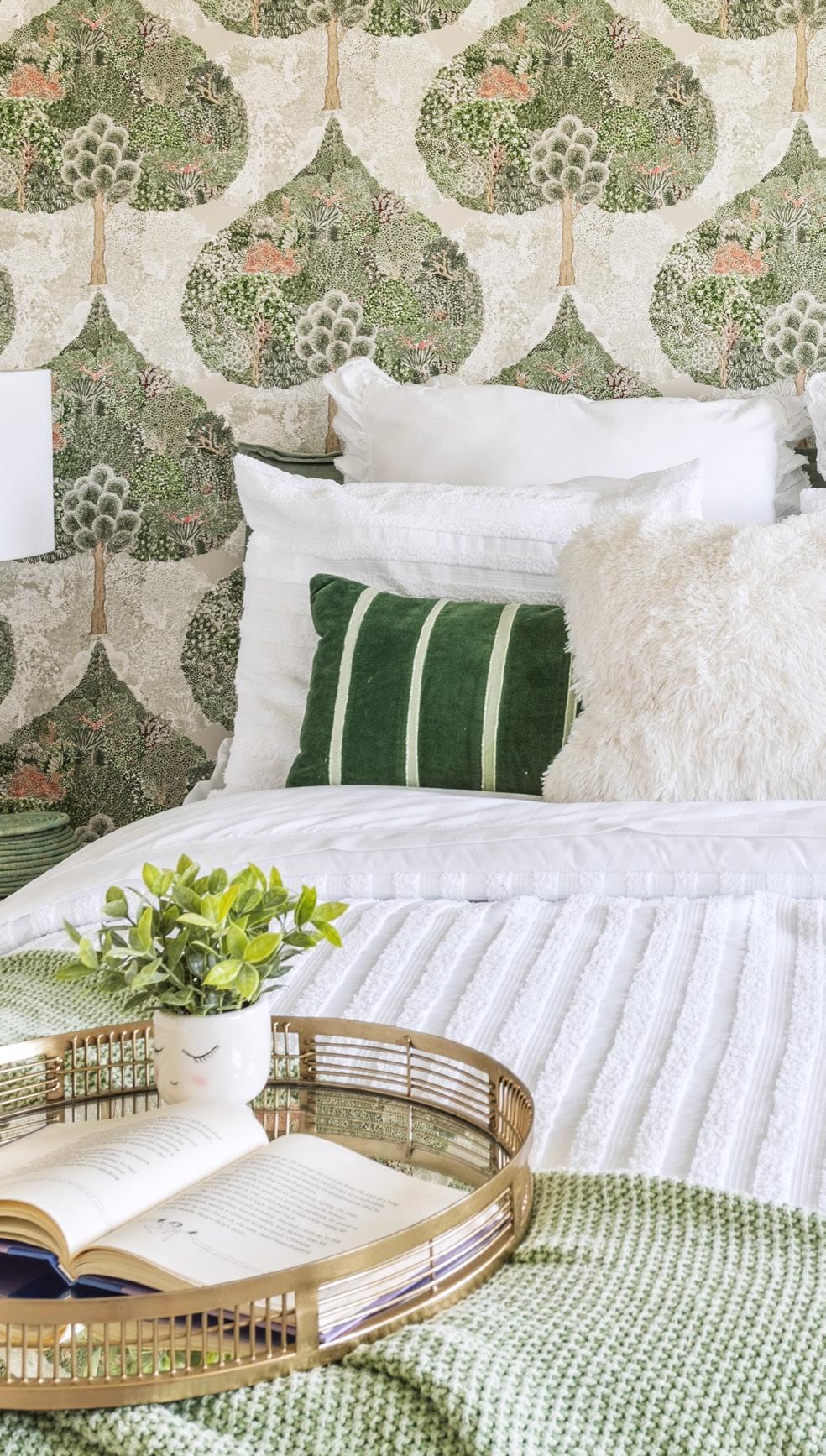
2 minute read
DOS & DON'TS OF INCORPORATING TEXTURE
Designer Cathie Sheetz shares tips for achieving a layered look with textured elements that strike just the right balance.
DO: Mix different materials.Combine smooth and rough, soft and hard, shiny and matte surfaces. For inspiration, consider velvets, leathers, rattan, and stone. Mixing different elements achieves depth while preventing the room from feeling flat. If you can picture a soft rug on a hardwood floor or a chunky knit throw on a leather ottoman, you are already on your way!
DON’T: Overdo it.There can be too much of a good thing, so be sure the room is balanced rather than chaotic. Vary textures in scale, type, and placement. With scale and proportion as your guides, mix assorted textured elements and introduce solid-colored features for a harmonized visual break.
DO: Layer!Layering textures creates depth and coziness. Put a homespun throw over a crisp cotton sofa, or use a bold patterned area rug to accessorize a slightly larger jute one.
DON’T: Forget about function.Use different textures thoughtfully and always balance creativity with practicality. Incorporate durable fabric on upholstered pieces and avoid tripping hazards by choosing flat weaves when layering area rugs.
DO: Think beyond textiles.Texture isn’t just for fabrics. Wallpaper, artwork, and trim details are the perfect vehicles for adding interest and authenticity to a room. Bring the look together with ceramics, plants, stone, and natural pieces.
DON’T: Forget about metals.Invite metals to the party by incorporating them on drapery hardware, lighting, and end tables. Be creative and mix a variety of finishes. Every room can usually handle a little bit of metal to complement that must-have anchor piece.






